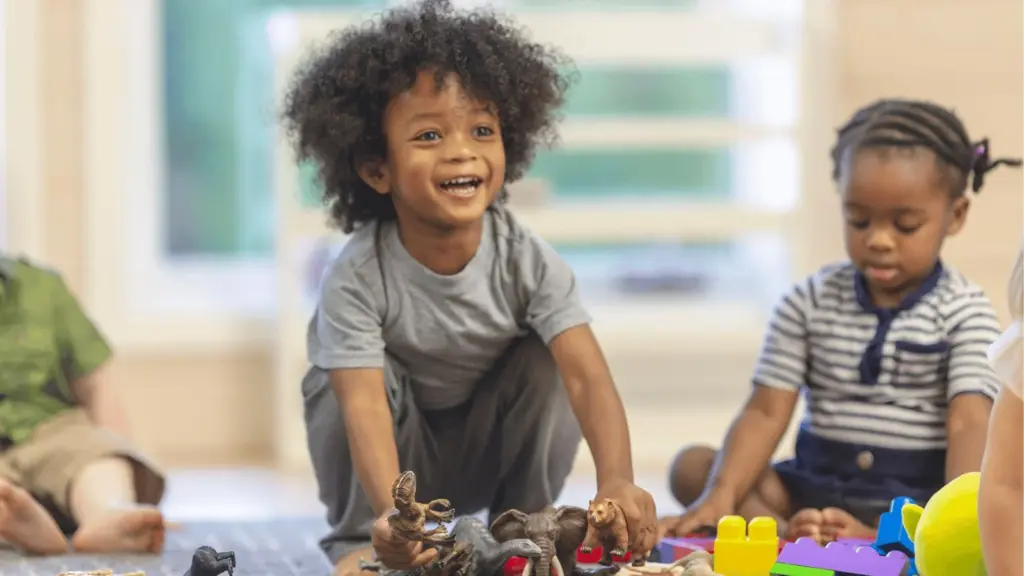What is Creative Play?
Creative play refers to activities that allow children to express their ideas, imagination, and emotions in an open-ended and non-structured way. It fosters exploration and experimentation, giving children the freedom to create without restrictions or specific outcomes. This form of play nurtures creativity and problem-solving, allowing children to think outside the box while developing critical cognitive and motor skills.
Why is Creative Play Important for Child Development?
Creative play is vital to child development as it stimulates multiple areas of growth—intellectual, emotional, physical, and social. Engaging in creative activities enhances brain development, particularly in areas related to memory, attention, and flexible thinking. It encourages self-expression, helping children to articulate their feelings and emotions in a non-verbal way, which is particularly helpful in early childhood when verbal skills are still developing.
The Role of Imagination in Early Childhood
Imagination is at the core of creative play. When children engage in imaginative play, such as pretending to be someone else or creating scenarios with toys, they are exercising their ability to think abstractly. This ability helps in cognitive development, problem-solving, and emotional regulation, all of which are foundational for future academic and social success.
Overview of Different Types of Creative Play
Creative play can take many forms, from pretend play and role-playing to artistic creation and physical exploration. The common thread across all types is the element of self-directed exploration, where children take the lead. Whether they are building with blocks, painting, or engaging in imaginative role-play, each type contributes uniquely to their developmental milestones.

The Benefits of Creative Play
Cognitive Development and Problem-Solving Skills
Through creative play, children develop critical thinking skills as they learn to solve problems, make decisions, and explore cause and effect. Whether constructing a tall tower with blocks or creating a painting, they engage their brains in planning and decision-making. This type of play helps them think flexibly and come up with solutions to challenges, an essential skill for future learning and life.
Enhancing Emotional Intelligence Through Play
Creative play provides a safe space for children to explore and express their emotions. By acting out different roles or creating scenarios, they learn how to empathize with others, recognize their own feelings, and manage emotions like frustration, excitement, or disappointment. These experiences enhance their emotional intelligence and build resilience, essential traits for handling life’s ups and downs.
Boosting Language and Communication Abilities
Language skills are naturally developed through creative play. Whether children are narrating their actions, explaining their artwork, or engaging in role-play, they are building vocabulary, practicing sentence structures, and improving verbal expression. Creative play also encourages storytelling, which helps them develop both receptive and expressive language skills.
Supporting Social Skills and Cooperation
Many forms of creative play involve working with others, which helps children develop essential social skills. Playing together requires cooperation, negotiation, sharing, and turn-taking. As children engage with peers or adults in creative activities, they learn how to navigate social dynamics, resolve conflicts, and build relationships, skills that are vital for success in school and life.
Physical Development and Motor Skills
Creative play can also involve physical activities that develop fine and gross motor skills. For instance, manipulating small objects like crayons, paintbrushes, or building blocks hones fine motor control, while more active play like dancing or constructing large-scale projects engages gross motor skills. This physical component of creative play is essential for overall physical development and coordination.

Setting the Stage for Creative Play
Creating a Safe and Stimulating Environment
A supportive environment is crucial for fostering creative play. This includes having a dedicated space where children feel safe to explore, create, and experiment without fear of judgment or failure. A well-organized, clean, and inviting play area with accessible materials promotes exploration and innovation.
The Importance of Open-Ended Play Materials
Open-ended materials like blocks, clay, paints, and household objects encourage children to use their imagination to create. Unlike toys with predetermined uses, these materials allow for a wide range of possibilities, giving children the freedom to shape their play experience. Providing a variety of such materials ensures children are constantly stimulated and engaged.
Minimizing Screen Time to Encourage Imagination
While technology has its place, too much screen time can limit a child’s ability to think creatively. Reducing reliance on screens encourages children to engage more with their environment, use their imagination, and develop independent problem-solving skills. Balancing screen time with hands-on activities ensures that creativity is nurtured.
The Role of Parents and Caregivers in Encouraging Play
Parents and caregivers play a crucial role in fostering creative play by providing encouragement, resources, and time for play. Instead of directing the play, it’s important for adults to take a backseat and allow children to lead. Offering positive reinforcement and asking open-ended questions about their creations can deepen their engagement.
How to Balance Structured and Unstructured Play
While both structured and unstructured play are important, finding the right balance is key to fostering creativity. Structured play offers guidance and learning opportunities, but unstructured, child-led play allows for freedom of expression and discovery. Allowing ample time for unstructured play helps children explore their own interests and ideas without restrictions.


